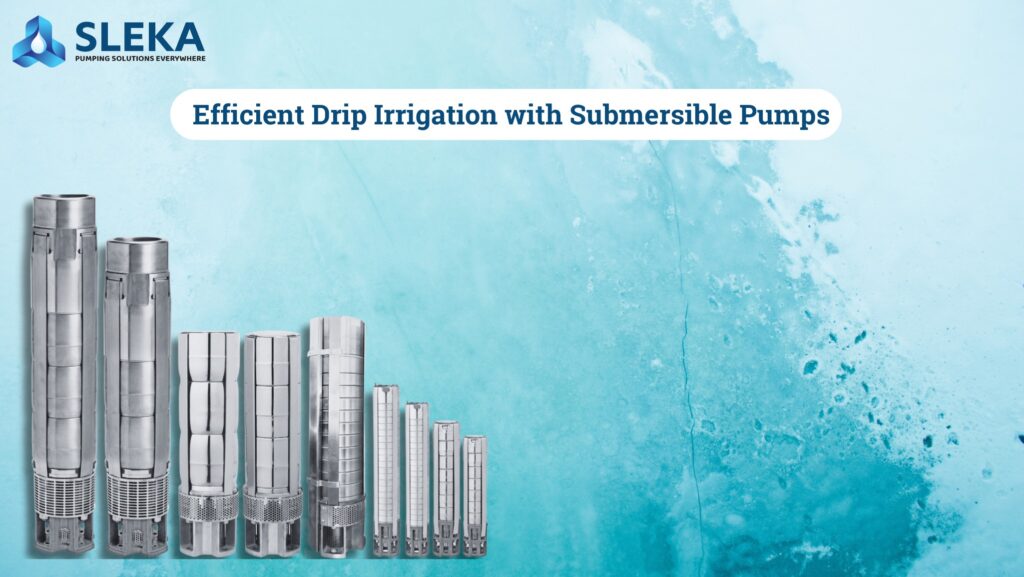7 Essential Tips for Maximizing Your Drip Irrigation Pumps
In modern agriculture, the efficiency of irrigation systems can significantly impact crop yields and resource management. One of the most effective methods to achieve optimal irrigation is through drip irrigation pumps. These systems deliver water directly to the plant’s roots, minimizing evaporation and runoff. In this blog, we’ll explore seven essential tips for maximizing your drip irrigation pumps, ensuring that your crops thrive while conserving water resources.
Understanding Drip Irrigation Pumps
Drip irrigation pumps are specialized pumps designed to deliver water through a network of tubing directly to the root zone of plants. This method allows for precise water management, which is crucial for maintaining healthy crops. The use of Sleka submersible pumps in your drip irrigation system can enhance performance, as they are specifically designed to operate underwater and provide consistent pressure, essential for effective irrigation.
1. Choose the Right Pump Size
Selecting the appropriate size of drip irrigation pump is vital. If the pump is too small, it won’t deliver enough water, and if it’s too large, it may lead to excessive pressure, causing damage to the system. It’s important to calculate your water requirements based on the size of your farm and the specific needs of your crops. Consulting with experts at Sleka, known for their specialization in submersible pumps, can provide valuable insights into choosing the right pump.
2. Regular Maintenance is Key
Just like any other machinery, drip irrigation pumps require regular maintenance to ensure they function properly. This includes checking for leaks, replacing worn-out components, and ensuring that filters are clean. Regular maintenance will not only prolong the life of your pump but also enhance its efficiency. Sleka offers comprehensive maintenance services for their submersible pumps, ensuring that your irrigation system runs smoothly.
3. Monitor Water Pressure
Maintaining the right water pressure is crucial for the effectiveness of your drip irrigation system. Too much pressure can cause emitters to malfunction, while too little can lead to uneven watering. Install a pressure gauge and monitor it regularly to ensure that your pump operates within the recommended pressure range. Utilizing Sleka’s submersible pumps can help maintain consistent pressure due to their robust design.
4. Optimize System Layout
The layout of your drip irrigation system significantly affects its performance. Ensure that your tubing is laid out efficiently to minimize bends and turns that can obstruct water flow. Additionally, consider the placement of emitters—placing them closer to the plants will maximize water absorption. When designing your system, refer to Sleka’s expertise in submersible pumps for recommendations on optimal layouts.
5. Use Quality Components
Investing in high-quality components for your drip irrigation system is essential. This includes durable tubing, reliable emitters, and, most importantly, a dependable pump. Sleka’s submersible pumps are designed to withstand harsh conditions and provide reliable performance over time. Using quality components reduces the likelihood of failures and improves overall efficiency.
6. Schedule Irrigation Wisely
Timing your irrigation is as important as the amount of water you use. Consider factors such as soil moisture levels, weather conditions, and crop growth stages when scheduling your watering sessions. Early morning or late evening is often the best time to irrigate, as temperatures are cooler, reducing evaporation rates. By effectively scheduling your irrigation with drip irrigation pumps, you can ensure optimal water usage and crop health.
7. Automate Your System
Automation can greatly enhance the efficiency of your drip irrigation system. Implementing timers or moisture sensors allows for precise control over when and how much water is delivered to your crops. Automated systems reduce labor costs and ensure that plants receive consistent watering, which is vital for their growth. Consult with Sleka on integrating automation into your submersible pump setup for maximum efficiency.
FAQ Section
FAQ #1: What are the benefits of using drip irrigation pumps?
Drip irrigation pumps offer numerous benefits, including reduced water waste, improved crop yields, and minimized soil erosion. They deliver water directly to the roots of plants, allowing for efficient nutrient uptake.
FAQ #2: How often should I check my drip irrigation system?
It’s advisable to check your drip irrigation system at least once a week during the growing season. Look for leaks, clogs, and ensure that all components are functioning correctly.
FAQ #3: Can I use solar energy to power my drip irrigation pumps?
Yes! Solar-powered drip irrigation systems are becoming increasingly popular as they reduce reliance on traditional power sources and lower operational costs.
FAQ #4: How do I know if my pump is working efficiently?
Monitoring water pressure and flow rate can help you determine if your pump is functioning efficiently. Additionally, regular maintenance checks will identify any potential issues early.
FAQ #5: What should I do if my plants are not receiving enough water?
If you notice that your plants are not receiving adequate water, check for clogs in the emitters or tubing, verify that your pump is operating at the correct pressure, and ensure that your system layout is efficient.
Wrapping Up
Maximizing your drip irrigation pumps involves careful planning, regular maintenance, and utilizing quality components like those offered by Sleka, who specialize in submersible pumps. By following these essential tips, you can enhance your irrigation efficiency and ensure healthy crop growth while conserving precious water resources.
To know more about solar pumps in agriculture, visit- Sleka Products
To know more about Noryl impellers and diffusers, do visit- Nobtech Products
By implementing these practices and utilizing high-quality equipment from Sleka, you’ll be well on your way to achieving a sustainable and productive agricultural operation.


